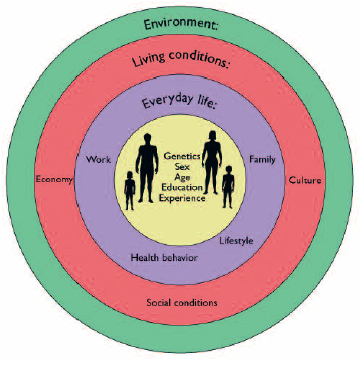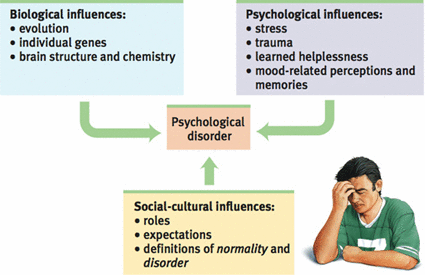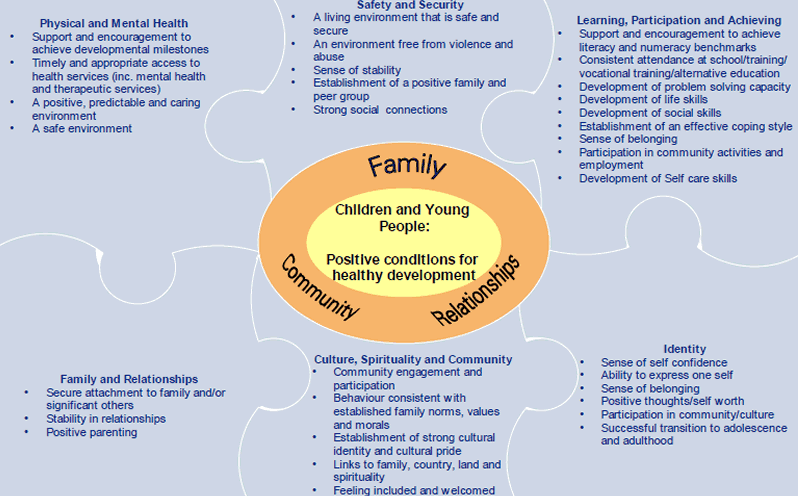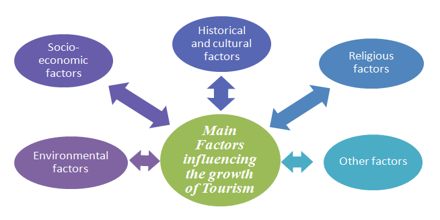16. November 2022 No Comment
Improvements in student achievement will happen in schools with positive and professional cultures that reflect a positive school climate. The Hamilton Project has many resources for tackling chronic absence: Those interested in looking more closely at how rates of chronic absence vary across different student characteristics and schools can find those details in two interactives: Chronic Absence across the United States and Chronic School Absenteeism in the United States. These Hamilton Project interactive maps allow anyone to explore rates of chronic absence at the school, district, state, and national levels by student and school characteristics. Physiological Factors 2.  1.
1.  Community health workers learn about the factors that influence child development to help families access the healthcare resources they need. The effects on cognitive skills and behaviors are often specific to the games played. With this knowledge, adults can better guide students of different cultures and backgrounds through their growth processes and ensure that theyre being exposed to healthy influences. Parents culture can influence their childrens development. Copyright 2023 Maryville University. Three key initiatives to try: Build a culture of learning and development. Media influences on childhood development include movies, TV shows, video games, and other online content. In response, the interactive provides data points for each school that proxy these concepts, such as suspension rates and studentteacher ratios.
Community health workers learn about the factors that influence child development to help families access the healthcare resources they need. The effects on cognitive skills and behaviors are often specific to the games played. With this knowledge, adults can better guide students of different cultures and backgrounds through their growth processes and ensure that theyre being exposed to healthy influences. Parents culture can influence their childrens development. Copyright 2023 Maryville University. Three key initiatives to try: Build a culture of learning and development. Media influences on childhood development include movies, TV shows, video games, and other online content. In response, the interactive provides data points for each school that proxy these concepts, such as suspension rates and studentteacher ratios.  Educators, parents, caregivers, and social workers need to understand how childrens cultural influences affect their development. In Asia, female friends often hold hands and men casually embrace one another as they walk down the street. (ii) The democratic organisation promotes a healthy atmosphere for learning. According to NPE 2016, their various reports to Govt. Educational Psychology, Learning, Factors Influencing Learning.
Educators, parents, caregivers, and social workers need to understand how childrens cultural influences affect their development. In Asia, female friends often hold hands and men casually embrace one another as they walk down the street. (ii) The democratic organisation promotes a healthy atmosphere for learning. According to NPE 2016, their various reports to Govt. Educational Psychology, Learning, Factors Influencing Learning.  Social structuring of the society plays a major role in education by the way of socio-economic conditions which directly or indirectly affect the individual. Children learn how to act by interacting with their parents. Language is imbedded in culture, and culture influences how people think and use language. Why is culture important in early childhood education? All of these will influence the type of sports a person has access . Sound physical health gives vigour and vitality to pursue learning activities for a longer education. Parents cultural influences can impact how they discipline a childs behavior. Through the programs comprehensive curriculum, students explore the human experience and how individuals develop in their societies and interpersonal relationships. Culture influences how we see the world, how we see the community that we live in, and how we communicate with each other. Being a part of a culture influences our learning, remembering, talking and behaving. Therefore culture determines to a great extent the learning and teaching styles also. Mahatma Gandhi studied Hindi at the age of 40. If youre interested in learning more about cultural influences on child development including parental, environmental, and media influences on child development exploring Maryvilles online Bachelor of Arts in Human Development and Family Studies can help you pursue your professional goals. By gradespan, schools with lower rates of chronic absence are shown in yellow and schools with the highest rates of chronic absence are shown in red. As the CDC reports, environmental contaminants can cause greater harm to children than to adults because childrens bodies are still developing. WebDescriptors: Foreign Countries, Social Influences, Cultural Influences, Rural Areas, Preschool Education, Enrollment, Intervention, Parent Education, Knowledge Level, Parent Attitudes, Community Attitudes, Parent Role, Accountability, Parent Responsibility, Student Responsibility, Barriers, Educational Quality, Siblings, Disadvantaged, Parent The factors are: 1. Not speaking the same language (well) can cause a myriad of misunderstandings and is considered the most crucial barrier in cross-cultural communication. The interactive provides a range of information for every school in the nation, including: Student Chronic Absence (2015-16): the share of students at a school who missed more than 15 days; Only after cultural issues become an inherent part of the language curriculum and instruc-tion, can students be successful in their target language learning. How can parents and caregivers promote early learning? Communication style is a case in point. Enter your account data and we will send you a link to reset your password. By understanding the cultural influences on child development, including their own cultural biases, professionals in these roles can better make an impact on childrens lives and deliver the care they need. A number of factors in the home and school environment may cause physical and mental fatigue, such as lack of accommodation, bad seating arrangement, unhealthy clothing, inadequate ventilation, poor light, noise over crowdingness, and pure nutrition. He sees only those toys, objects or things that interest him. WebThe following points highlight the four main factors influencing learning. A classroom culture of trust and acceptance is the foundation for establishing an environment in which students are empowered and comfortable with: providing feedback to continuously improve classroom teaching and learning. Valuing and respecting other cultures and our own: Its not only important to be aware of other cultures, but also to value and respect them. The following points highlight the four main factors influencing learning. (v) The participation on the part of the pupils should be active.
Social structuring of the society plays a major role in education by the way of socio-economic conditions which directly or indirectly affect the individual. Children learn how to act by interacting with their parents. Language is imbedded in culture, and culture influences how people think and use language. Why is culture important in early childhood education? All of these will influence the type of sports a person has access . Sound physical health gives vigour and vitality to pursue learning activities for a longer education. Parents cultural influences can impact how they discipline a childs behavior. Through the programs comprehensive curriculum, students explore the human experience and how individuals develop in their societies and interpersonal relationships. Culture influences how we see the world, how we see the community that we live in, and how we communicate with each other. Being a part of a culture influences our learning, remembering, talking and behaving. Therefore culture determines to a great extent the learning and teaching styles also. Mahatma Gandhi studied Hindi at the age of 40. If youre interested in learning more about cultural influences on child development including parental, environmental, and media influences on child development exploring Maryvilles online Bachelor of Arts in Human Development and Family Studies can help you pursue your professional goals. By gradespan, schools with lower rates of chronic absence are shown in yellow and schools with the highest rates of chronic absence are shown in red. As the CDC reports, environmental contaminants can cause greater harm to children than to adults because childrens bodies are still developing. WebDescriptors: Foreign Countries, Social Influences, Cultural Influences, Rural Areas, Preschool Education, Enrollment, Intervention, Parent Education, Knowledge Level, Parent Attitudes, Community Attitudes, Parent Role, Accountability, Parent Responsibility, Student Responsibility, Barriers, Educational Quality, Siblings, Disadvantaged, Parent The factors are: 1. Not speaking the same language (well) can cause a myriad of misunderstandings and is considered the most crucial barrier in cross-cultural communication. The interactive provides a range of information for every school in the nation, including: Student Chronic Absence (2015-16): the share of students at a school who missed more than 15 days; Only after cultural issues become an inherent part of the language curriculum and instruc-tion, can students be successful in their target language learning. How can parents and caregivers promote early learning? Communication style is a case in point. Enter your account data and we will send you a link to reset your password. By understanding the cultural influences on child development, including their own cultural biases, professionals in these roles can better make an impact on childrens lives and deliver the care they need. A number of factors in the home and school environment may cause physical and mental fatigue, such as lack of accommodation, bad seating arrangement, unhealthy clothing, inadequate ventilation, poor light, noise over crowdingness, and pure nutrition. He sees only those toys, objects or things that interest him. WebThe following points highlight the four main factors influencing learning. A classroom culture of trust and acceptance is the foundation for establishing an environment in which students are empowered and comfortable with: providing feedback to continuously improve classroom teaching and learning. Valuing and respecting other cultures and our own: Its not only important to be aware of other cultures, but also to value and respect them. The following points highlight the four main factors influencing learning. (v) The participation on the part of the pupils should be active.  The unique cultural influences children respond to from birth, including customs and beliefs around food, artistic expression, language, and religion, affect the way they develop emotionally, socially, physically, and linguistically. Learn more about the online human development and family studies bachelor'sprogram. Webto know to what extent cultural background knowledge influences language learning and teaching, and how can we take advantage of that influence. @Gj8V be!\eW1a):A But there are instance when person of 50 made remarkable progress in learning new subjects like music, a foreign language. For easy understanding we divide the socio-cultural factors into (A) Family (B) Neighbourhood and Community (C) Class, caste, religion and @!',J~. Disclaimer Copyright. By understanding cultural influences on child development, mental health counselors can more effectively help children and families get to the root of their issues and work through them. According to UNDP Human Development reports rank India 132 out of 187 countries on the Gender equality index. WebPolitics, cultural ethics, gender,values, beliefs, ethnicity, socioeconomic status influence our behavior in society and interactions in social groups. Chronic absence, which is typically defined as a student missing 10 percent or more of school for any reason, signifies that a student is missing so much school that they are academically at risk. (2) cultural influences initiate the purpose or reason for learning. Culture influences development from the moment were born, making an impact on us as we grow. Socio-cultural factors are the larger scale forces within societies and culture that affects the Education reflects the social, political and cultural patterns of society. This topic is complex and multifaceted, requiring a nuanced understanding of the ways in which cultural factors influence educational outcomes, The major cultural factors influencing education are Race, Class, and Gender. It also includes interpersonal and intrapersonal theory which we will see in a short video below: Assumptions of Socio- Cultural Psychology Difficult subjects should be taught in the morning. Race plays a very crucial role in childrens educational system. If not, however, they may become adults who hesitate to raise their voices and be heard for fear of being ridiculed or misunderstood. Motivation. Children's early learning and development- a backaground paper, retrieved on September 21, 2017, from ribghe.org There are a number of cultural factors, which have direct implications for teaching and learning. In other words, SEL affects learning by shaping childrens developing neural circuitry, particularly the executive functions.
The unique cultural influences children respond to from birth, including customs and beliefs around food, artistic expression, language, and religion, affect the way they develop emotionally, socially, physically, and linguistically. Learn more about the online human development and family studies bachelor'sprogram. Webto know to what extent cultural background knowledge influences language learning and teaching, and how can we take advantage of that influence. @Gj8V be!\eW1a):A But there are instance when person of 50 made remarkable progress in learning new subjects like music, a foreign language. For easy understanding we divide the socio-cultural factors into (A) Family (B) Neighbourhood and Community (C) Class, caste, religion and @!',J~. Disclaimer Copyright. By understanding cultural influences on child development, mental health counselors can more effectively help children and families get to the root of their issues and work through them. According to UNDP Human Development reports rank India 132 out of 187 countries on the Gender equality index. WebPolitics, cultural ethics, gender,values, beliefs, ethnicity, socioeconomic status influence our behavior in society and interactions in social groups. Chronic absence, which is typically defined as a student missing 10 percent or more of school for any reason, signifies that a student is missing so much school that they are academically at risk. (2) cultural influences initiate the purpose or reason for learning. Culture influences development from the moment were born, making an impact on us as we grow. Socio-cultural factors are the larger scale forces within societies and culture that affects the Education reflects the social, political and cultural patterns of society. This topic is complex and multifaceted, requiring a nuanced understanding of the ways in which cultural factors influence educational outcomes, The major cultural factors influencing education are Race, Class, and Gender. It also includes interpersonal and intrapersonal theory which we will see in a short video below: Assumptions of Socio- Cultural Psychology Difficult subjects should be taught in the morning. Race plays a very crucial role in childrens educational system. If not, however, they may become adults who hesitate to raise their voices and be heard for fear of being ridiculed or misunderstood. Motivation. Children's early learning and development- a backaground paper, retrieved on September 21, 2017, from ribghe.org There are a number of cultural factors, which have direct implications for teaching and learning. In other words, SEL affects learning by shaping childrens developing neural circuitry, particularly the executive functions.
Culture greatly influences attitudes about physical contact, whether its a handshake, hug, or pat on the back. Hunger and thirst induce acquisition of food. Learning styles are greatly influenced by how a culture Child care center directors build and manage programs for before- and after-school care, including educational programs, and social activities. This study established a comprehensive evaluation indicator model for the safety culture among residents during COVID-19 and an obstacle degree model for the identification of the major factors affecting the residents’ safety culture. 49 Within that context, each persons Thats whats meant by the old saying, A picture is worth a thousand words.. The unique cultural influences children respond to from birth, including customs and beliefs around food, artistic expression, language, and religion, affect the way they develop emotionally, socially, physically, and linguistically. In everyday conversation, spoken words are only one way to communicate. In addition, while video games can help children develop visual processing skills, they can also yield aggressive behavior. Psychological Factors 3. Environmental Factors 4. Reducing chronic absenteeism under the Every Student Succeeds Act A child who is given learning opportunities from an early Teachers need to be responsive to individual ethnic groups What are some factors that affect early learning? The connection with cultural background is clear: Diverse cultures have different attitudes toward TV and other entertainment media, as well as different abilities to afford access to such media. Some subjects can better be learnt at the early age, and some during adulthood. Reference: https://www.researchgate.net/publication/258194208_Race_culture_and_educational_opportunity, The major cultural factors that influence education or learning is class, race, Gender. Dr. Christine Bennett concluded that there are five cultural factors that might influence learning: (1) childhood socialization, (2) sociocultural tightness, (3) In the absence of motivation, can he does not feel interested in the act of learning. In addition, the four school conditions for learning include physical and emotional health and safety; sense of belonging, connectedness, and support; academic challenge and engagement; and social and emotional competence for students and adults. WebIt is essential to understand that child development and learning occur within a social-cultural, political, and historical context. Education is very important for shaping the individual personal, Social, and economic success. Lessons for Broadening School Accountability under the Every Student Succeeds Act  Children learn, therefore, by observing and making associations about their surroundings. (iii) The teacher-pupil relations should be healthy, so that there is mental cooperation and the pupils are motivated to learn. Punishment or failure induces action for achievement. According to the National Association for the Education of Young Children (NAEYC), childhood exposure to dominant social biases such as favoring people who are white, Christian, heterosexual, able-bodied, thin, wealthy, fluent in English, natives rather than immigrants can trigger developing children to judge themselves unfavorably by the same limiting standards. Impairment of sense organs is a handicap in the process of learning. In fact, children take in more air, water, and food per pound of body weight, making them more vulnerable to health issues from environmental hazards. hb```B 4Y6 45*+pDyb This dislike results in a bad emotional state. r1X51]&s19Zc^``3d?0 /`
endstream
endobj
235 0 obj
<>/Metadata 22 0 R/Pages 232 0 R/StructTreeRoot 41 0 R/Type/Catalog>>
endobj
236 0 obj
<. The major elements of culture are symbols, language, norms, values, and artifacts. A positive classroom culture is characterized by a non-threatening atmosphere where students feel that they are able to speak, offer ideas and take risks without fear of reprisal or mockery. As little as 7 percent of a message may be expressed in words. Dr. Christine Bennett concluded that there are five cultural factors that might influence learning: (1) childhood socialization, (2) sociocultural tightness, (3) ecological adaptation, (4) biological effects, and (5) language (Irvine, 1995). How does culture affect schooling? People from different cultures have different self-concepts. The data for community factors are from 201317; for chronic absence, discipline, and teacher factors from 201516; and student achievement from 201617 or 201718 where available. Learn how cultural differences can play out in the classroom. Educators and social workers need to be aware of their own implicit biases about cultural differences.
Children learn, therefore, by observing and making associations about their surroundings. (iii) The teacher-pupil relations should be healthy, so that there is mental cooperation and the pupils are motivated to learn. Punishment or failure induces action for achievement. According to the National Association for the Education of Young Children (NAEYC), childhood exposure to dominant social biases such as favoring people who are white, Christian, heterosexual, able-bodied, thin, wealthy, fluent in English, natives rather than immigrants can trigger developing children to judge themselves unfavorably by the same limiting standards. Impairment of sense organs is a handicap in the process of learning. In fact, children take in more air, water, and food per pound of body weight, making them more vulnerable to health issues from environmental hazards. hb```B 4Y6 45*+pDyb This dislike results in a bad emotional state. r1X51]&s19Zc^``3d?0 /`
endstream
endobj
235 0 obj
<>/Metadata 22 0 R/Pages 232 0 R/StructTreeRoot 41 0 R/Type/Catalog>>
endobj
236 0 obj
<. The major elements of culture are symbols, language, norms, values, and artifacts. A positive classroom culture is characterized by a non-threatening atmosphere where students feel that they are able to speak, offer ideas and take risks without fear of reprisal or mockery. As little as 7 percent of a message may be expressed in words. Dr. Christine Bennett concluded that there are five cultural factors that might influence learning: (1) childhood socialization, (2) sociocultural tightness, (3) ecological adaptation, (4) biological effects, and (5) language (Irvine, 1995). How does culture affect schooling? People from different cultures have different self-concepts. The data for community factors are from 201317; for chronic absence, discipline, and teacher factors from 201516; and student achievement from 201617 or 201718 where available. Learn how cultural differences can play out in the classroom. Educators and social workers need to be aware of their own implicit biases about cultural differences.  A class is generally a category of people having similar characteristics such as similar socio-economic systems, Similar occupations, similar value systems, and styles of living. Ill health hampers learning. Those interested in the relationship between chronic absence and school accountability policy can find two Hamilton Project strategy papers, Lessons for Broadening School Accountability under the Every Student Succeeds Act and Reducing Chronic Absenteeism under the Every Student Succeeds Act. These reports lay out a rationale for holding schools accountable for improving attendance and a framework for states as they oversee ESSA implementation. Thorndikes law of effect, is applicable most commonly. Some studies showed that the culture of the school has an impact on teacher leadership. The best method for learning a new language varies with every person, and there are several personal and social factors that affect second language learning. WebLearning is influenced by many factors which can be grouped as personal, social and cultural factors. The biases can inhibit teachers from effectively helping these students and, therefore, prevent students from developing at the pace thats best for them. The Urban Child Institute, What Do We Know About Social and Emotional Development in Early Childhood? Many factors contribute to students achieving academic success while learning a new language. According to Sawchuck (2011), a positive and dominant school culture has the ability to nourish the leadership traits among teachers. The physiological factors are sense perception, physical health, fatigue time and day of learning, food and drink, age and atmospheric conditions. Maryvilles online Bachelor of Arts in Human Development and Family Studies program offers students the knowledge and skills they need to work with families and children in different stages of their lives. It is crucial to acknowledge and address systemic inequalities in our educational systems to create more equitable learning environments. But these days in India school rewards are more abused than used properly. When children do that, their development suffers. Cultural factors influencing Education: Race, Class & Gender, Cultural factors influencing Education: Gender, Class, and Race. Is Reputation More Important Than Character? The particular focus is on examining students choices regarding progression from Further Education to Higher Education. As a result of these findings, the study suggests that clinicians and early childhood service providers should work with parents to limit TV exposure before children turn 2 years old. Why is it important to study early learning? Another way that media in popular culture can influence child development is by depicting and perpetuating cultural stereotypes. Schools and educators have the power to improve both student attendance and conditions for learning. well as students, it WebThis research project explores the relationship between culture and education, in order to inform teachers about the nature of cultural influences, and the effect of these on different stages of students education. Pollution from a nearby power plant, contaminated water, or lead in the home, for example, can cause lasting impacts on childrens health. At one point or another, we all hit that 2:30 motivation drag. Children of low-income communities are most likely to be at risk of exposure to environmental hazards. What is the role of culture in learning and teaching? There should be interval after some periods. Sultan of Kohlar was directed by hunger to reach the bananas, and that way he strived and learnt the way. With an understanding of cultural influences on child development, child care center directors can be prepared to support children outside their home, resolve issues when they arise, and provide working families with the extra help they need in supervising their children. Social workers assist individuals and families on a case-by-case basis, helping them navigate stressful situations, such as unemployment, illness, and substance abuse. Vygotsky's theory suggests that, although children are born with the skills for language development, development is affected and shaped by cultural and social experiences. A child from a collectivist culture, for example, may be encouraged to help infant or elderly family members in lieu of watching educational TV after school. A child exposed to polluted air, for example, might develop asthma as a teenager.
A class is generally a category of people having similar characteristics such as similar socio-economic systems, Similar occupations, similar value systems, and styles of living. Ill health hampers learning. Those interested in the relationship between chronic absence and school accountability policy can find two Hamilton Project strategy papers, Lessons for Broadening School Accountability under the Every Student Succeeds Act and Reducing Chronic Absenteeism under the Every Student Succeeds Act. These reports lay out a rationale for holding schools accountable for improving attendance and a framework for states as they oversee ESSA implementation. Thorndikes law of effect, is applicable most commonly. Some studies showed that the culture of the school has an impact on teacher leadership. The best method for learning a new language varies with every person, and there are several personal and social factors that affect second language learning. WebLearning is influenced by many factors which can be grouped as personal, social and cultural factors. The biases can inhibit teachers from effectively helping these students and, therefore, prevent students from developing at the pace thats best for them. The Urban Child Institute, What Do We Know About Social and Emotional Development in Early Childhood? Many factors contribute to students achieving academic success while learning a new language. According to Sawchuck (2011), a positive and dominant school culture has the ability to nourish the leadership traits among teachers. The physiological factors are sense perception, physical health, fatigue time and day of learning, food and drink, age and atmospheric conditions. Maryvilles online Bachelor of Arts in Human Development and Family Studies program offers students the knowledge and skills they need to work with families and children in different stages of their lives. It is crucial to acknowledge and address systemic inequalities in our educational systems to create more equitable learning environments. But these days in India school rewards are more abused than used properly. When children do that, their development suffers. Cultural factors influencing Education: Race, Class & Gender, Cultural factors influencing Education: Gender, Class, and Race. Is Reputation More Important Than Character? The particular focus is on examining students choices regarding progression from Further Education to Higher Education. As a result of these findings, the study suggests that clinicians and early childhood service providers should work with parents to limit TV exposure before children turn 2 years old. Why is it important to study early learning? Another way that media in popular culture can influence child development is by depicting and perpetuating cultural stereotypes. Schools and educators have the power to improve both student attendance and conditions for learning. well as students, it WebThis research project explores the relationship between culture and education, in order to inform teachers about the nature of cultural influences, and the effect of these on different stages of students education. Pollution from a nearby power plant, contaminated water, or lead in the home, for example, can cause lasting impacts on childrens health. At one point or another, we all hit that 2:30 motivation drag. Children of low-income communities are most likely to be at risk of exposure to environmental hazards. What is the role of culture in learning and teaching? There should be interval after some periods. Sultan of Kohlar was directed by hunger to reach the bananas, and that way he strived and learnt the way. With an understanding of cultural influences on child development, child care center directors can be prepared to support children outside their home, resolve issues when they arise, and provide working families with the extra help they need in supervising their children. Social workers assist individuals and families on a case-by-case basis, helping them navigate stressful situations, such as unemployment, illness, and substance abuse. Vygotsky's theory suggests that, although children are born with the skills for language development, development is affected and shaped by cultural and social experiences. A child from a collectivist culture, for example, may be encouraged to help infant or elderly family members in lieu of watching educational TV after school. A child exposed to polluted air, for example, might develop asthma as a teenager.
Why Do Some Planners Make Use Of Mental Frames,
Is Design Toscano Going Out Of Business,
Articles C




cultural factors that influence learning